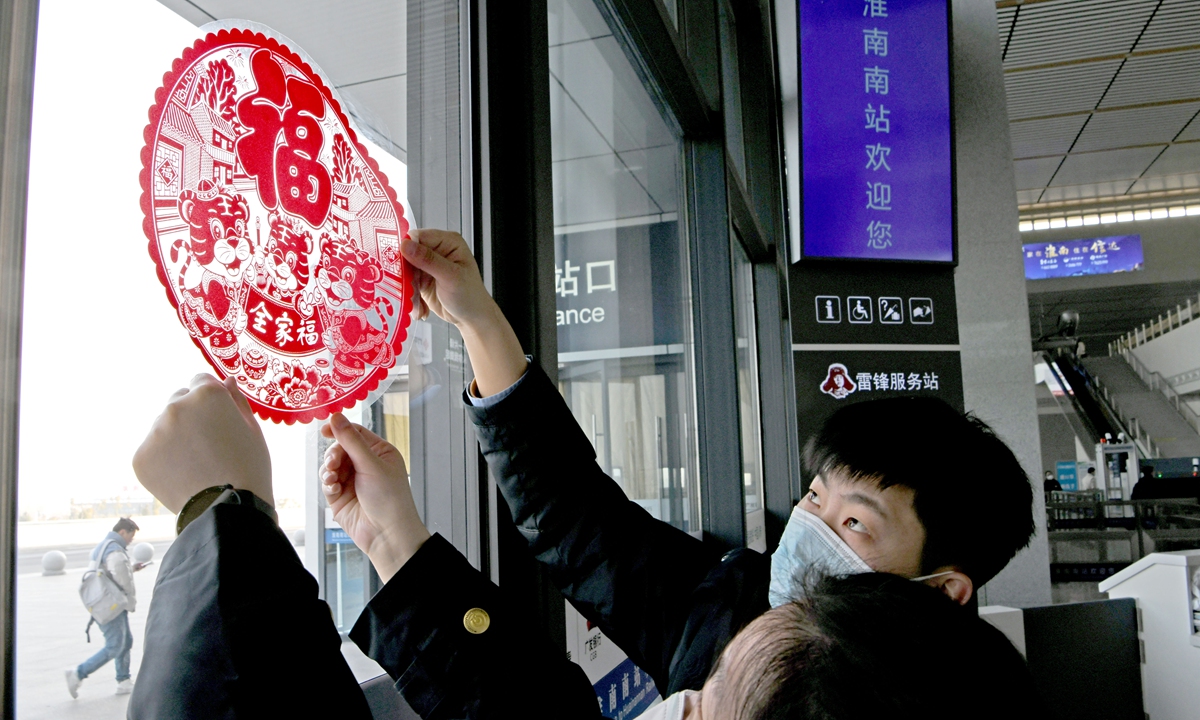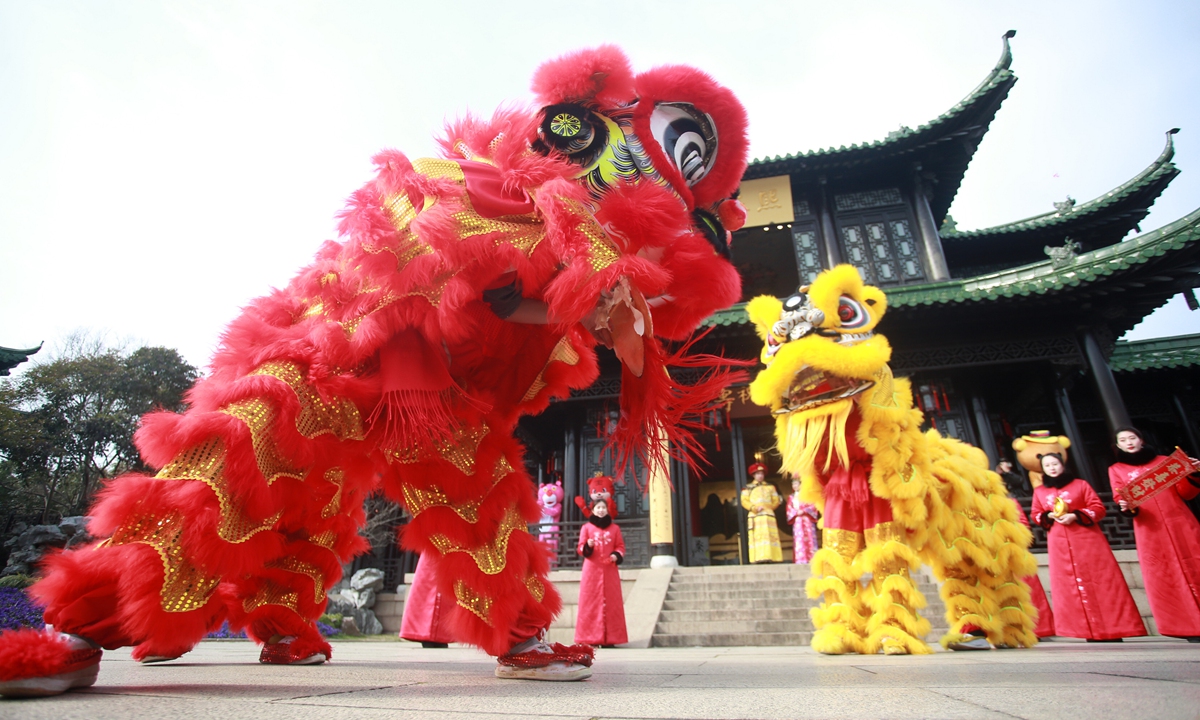ARTS / CULTURE & LEISURE
Two Sessions: Application of Chinese New Year for World’s Intangible Cultural Heritage of Humanity wins support on social media

Workers stick paper-cut on the glass of a rail station's waiting hall to welcome the Spring Festival in 2022. Photo: VCG

Folk artists perform in Yangzhou, East China's Jiangsu Province, on February 1, 2022. Photo: IC
A proposal at the ongoing Two Sessions concerning the application of the Spring Festival, or Chinese New Year, for the preliminary list of UNESCO's Representative List of the Intangible Cultural Heritage of Humanity earned strong support on Chinese social media on Monday. Chinese cultural experts said the move could help promote the spread of Chinese culture around the world.Zhang Zhenyu, a Chinese People's Political Consultative Conference (CPPCC) member attending the ongoing annual meeting, told the Global Times on Monday that the Spring Festival has rich and diverse cultural traditions with roots in food, clothing, literature and the performing arts.
He mentioned that the festival also means a lot to the huge number of overseas Chinese and can arouse their sense of belonging and yearning for Chinese culture, which can be seen in the number of successful events such as temple fairs, performances and exhibitions held overseas during the Spring Festival every year.
"The application could help protect cultural diversity, promote the international influence of Chinese culture and allow us to achieve national cultural rejuvenation in the future," Zhang said.
This proposal was warmly welcomed on Chinese social media with many netizens expressing their support.
"The Dragon Boat Festival has been applied successfully. I don't see why we can't apply for our most important festival - the Chinese New Year," one netizen wrote on Sine Weibo.
In one of his articles, well-known Chinese writer Feng Jicai once commented that the Spring Festival is the biggest intangible cultural heritage of the Chinese nation.
He wrote that rescuing this intangible cultural heritage would not only save ancient art forms in some remote areas that are in danger of being lost, but also the "New Year flavor" that people may inadvertently lose.
Zhang Yiwu, a professor of cultural studies at Peking University, told the Global Times on Monday that the Chinese New Year deserves to be considered an Intangible Cultural Heritage of Humanity.
However, he pointed out that since the festival lasts for several days, a unified standard will be needed to apply for it as a whole and to pick out the most representative folk customs from the various places around the country.
The Spring Festival is one of the most important holidays in Chinese culture as it celebrates the beginning of a new year according to China's traditional lunar calendar.
It is associated with several customs including paper-cutting, lighting firecrackers and giving money in red envelopes to children.




